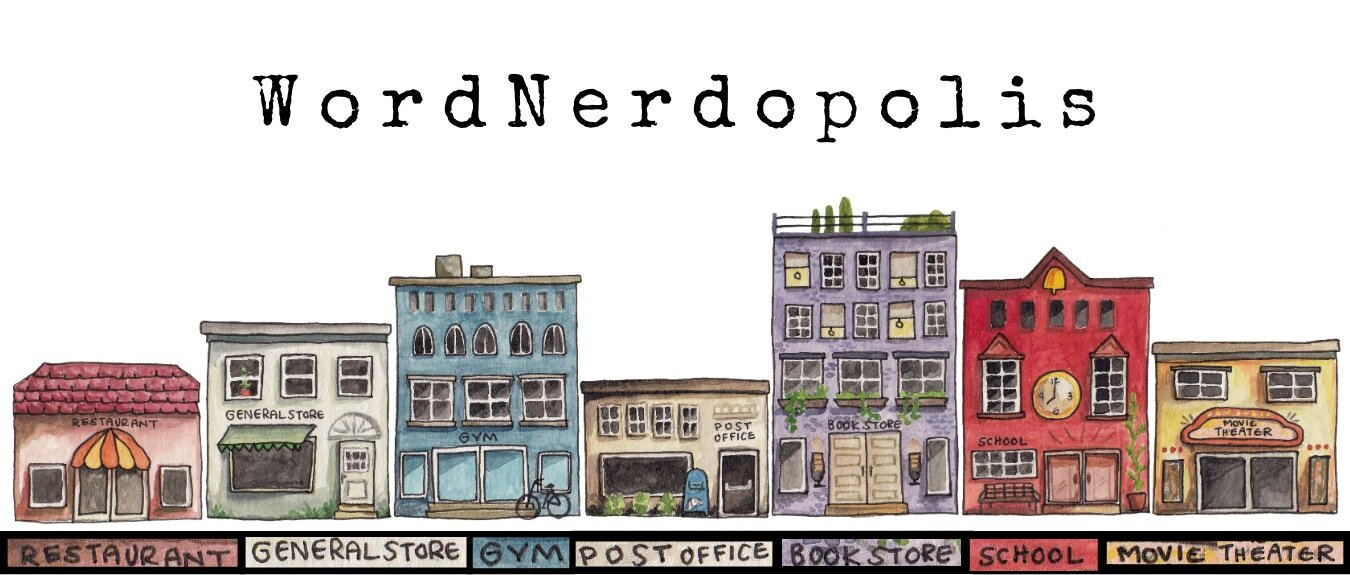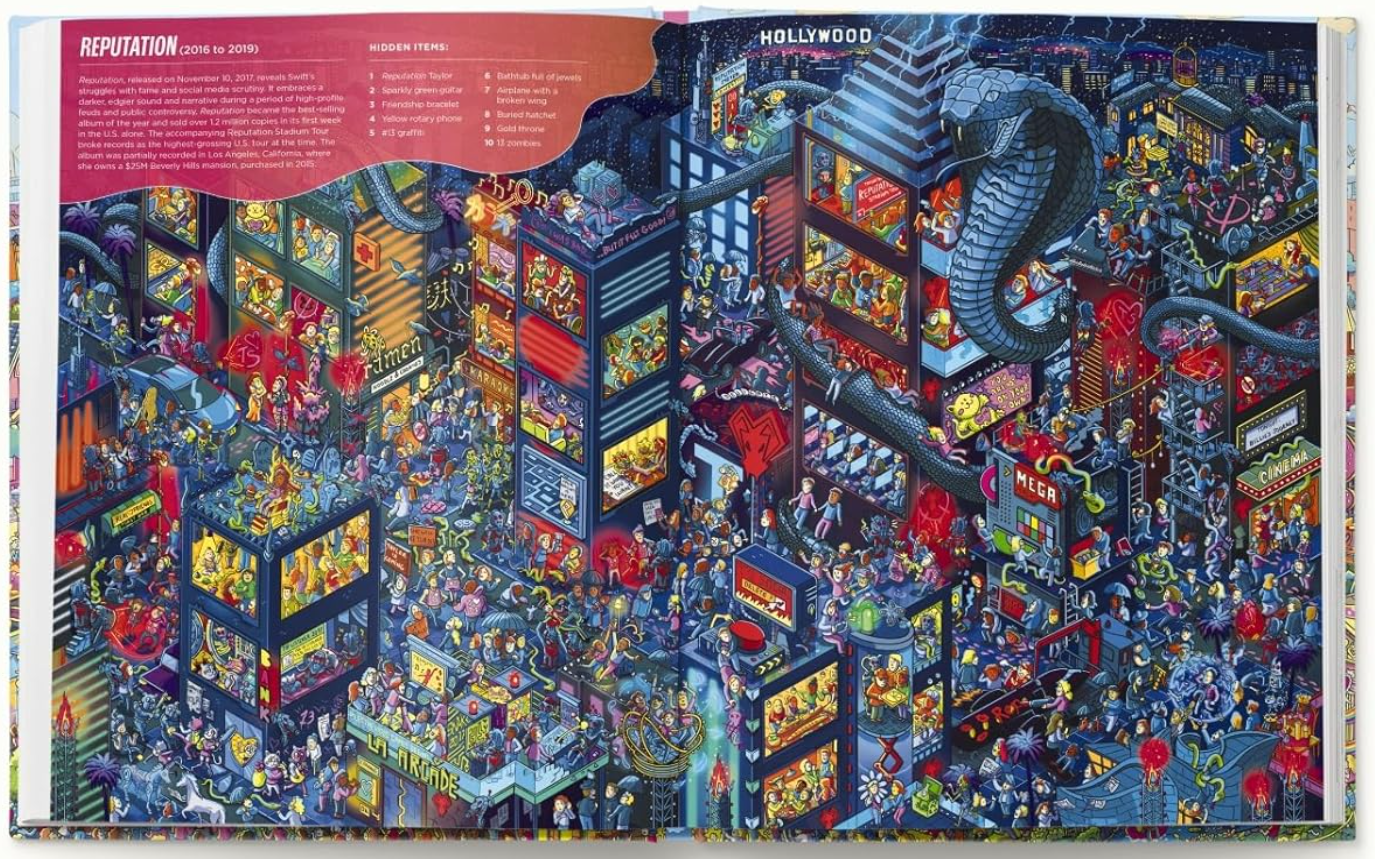Behind the Scenes with Gus Morais: An Interview about Taylor Swift: Unofficial Search & Find Biographies
I am a human who loves both Taylor Swift and books, so when I saw Zibby Owens posted about Taylor Swift: Unofficial Search and Find Biographies on Instagram, I immediately went on a treasure hunt to find it. This beautifully illustrated, interactive celebration of Taylor’s story was created by the brilliant Gus Morais. Gus wrote, researched, and illustrated this one-of-a-kind book, and I was beyond thrilled when he agreed to chat with me about his process. Time zones and language barriers made a video call tricky, so we went delightfully old-school and turned it into a written interview here on the blog.
So grab your cardigan (or your friendship bracelets!) and get ready to dive into this creative project that blends biography with scavenger-hunt fun. By the end, I’m pretty sure you’ll be counting down the days until release day — Tuesday, October 7 — so you can snag your own copy and enjoy it alongside Taylor’s new album drop.
(Personally, I’ll be grabbing my copies - yes, at least 2, lol - from Barnes and Noble, but you can also grab them via Amazon here.)
TEACHERS - a PDF copy of this interview, along with reflection questions, can be downloaded here.
Amanda: Where did the spark for this book, Taylor Swift: Unofficial Search and Find Biographies, come from?
Gus: Back in the first months of 2024, I received an email from Cider Mill Press, an imprint of HarperCollins, commissioning me to create a search-and-find book. Since I live in Madrid and their team is based in the US, we arranged a video call. In that meeting, I shared details about my career, illustration process, and ideas for the future: although I had been drawing search-and-find illustrations for almost two decades, most of my recent clients were in advertising, so I was thrilled with the chance to work with a major book publisher!
After this first meeting, we scheduled another with Cider Mill’s publisher, John Whalen, so he could meet me as well. The email invitation had the subject line: Search and Find Biographies. I loved that title, and during the meeting John shared his idea of making a visual biography in my search-and-find style about Taylor Swift! As someone who loves both drawing and research, I was amazed by the idea. Even though I didn’t know much about Taylor Swift at the time, I knew how detailed and complex her work is, and I was very excited to dive into her material (lyrics, music videos, and more) to retell her life story through search-and-find illustrations.
Amanda: With so many tiny, repeating details in search-and-find art, how do you keep the process enjoyable and avoid burnout?
Gus: I love my work because, every time I approach a blank page, I feel like I have the chance to create an entire universe: showing the crowds with their own social relations, memories, hidden jokes, or even cultural and informative details about the architecture or specific place I am representing. For a search-and-find artist like me, information is like a chest full of treasures: you can use it to make drawings richer, funnier, and more relatable. To avoid burnout, I try to keep the process playful and listen to what my body tells me while I'm working. I like variety, so instead of spending hours on repetitive tasks, I switch between coloring, drawing, and writing new ideas. It might look chaotic, but as long as I know the results I want to achieve, taking different paths keeps the process both enjoyable and productive.
Amanda: What did your education journey as an artist look like?
Gus: I didn’t follow a traditional Fine Arts education. I’ve loved drawing since childhood, and at seventeen I studied illustration for a year at a small art school in my hometown in Brazil. My teacher was very rigorous, and I learned essential principles like anatomy and perspective. At the time, though, I was still very focused on superhero comics, and it took me a while to find my own style. Later, at university, I studied Advertising. I eventually found out I wasn’t really interested in working in advertising, but the knowledge I gained (practice with image softwares, media and communications classes) helped me improve my illustration process. I also took many classes in the Arts and Literature department and joined workshops on children’s books, comics, wood engraving, watercolor, acrylics, oil painting, collage… It was a bit chaotic and stretched over more than ten years of exploration. Eventually, all of these influences came together in the search-and-find work I do today.
Amanda: You describe illustration as “an empathy tool.” Could you explain how your work connects with people emotionally, especially younger audiences?
Gus: When I started studying illustration, at 17, I was very focused on getting good at that superhero comics style I mentioned before. But some years later, during my early university years, I went through a period of depression. At that time, mental health wasn’t as openly discussed as it is today, so I mostly just felt sad and disconnected from the world. That’s when I began using illustration as a way to express what I was feeling. I created a character at the time, like an angel with a broken wing and a paper bag over its head, and started using it in my illustrations.
Later on, I started a blog where I would draw this character living in some situations that were inspired by song lyrics people sent me through the blog comments. They would share verses that had special personal meaning to them, and I would create illustrations reflecting those emotions. This was the early 2000s, before social media, but still many people participated and wrote to me about how much the drawings resonated with them.
That experience showed me how, despite our differences, we can connect through art, music, and poetry. My work has become more complex since then, and I no longer feel depressed, but I still try to include a wide range of different moments in my busy illustrations - funny situations, heartfelt memories, emotional moments - that people can see themselves in. Because I’ve lived those feelings, I approach them honestly and respectfully, and I think that’s why my work often connects emotionally with others.
What do you hope readers—especially kids—will take away from Taylor Swift: Unofficial Search and Find Biographies?
This book has so many layers! For longtime Swifties, for example, there are plenty of Taylor life details to recognize: her childhood pets, the houses she lived in (from Pennsylvania to New York and London), the first concerts she played, the car her family drove when she was a kid, the schools she attended... and of course, all the awards, hits and huge tours she would develop later! I researched it very deeply, from watching her childhood video footage in music videos like The Best Day and Christmas Tree Farm to reading old newspaper copies.
So, even if the illustration style is more cartoonish, the things I present through my drawings are based on very serious research. Also: each spread represents an era/album, and of course a time of her life, so I chose one verse from each song of each album to inspire illustrated situations among the visual mess. You’ll also find references to widely known Taylor lore: classic and new outfits, references to music videos, and even fan-created memes.
In the end, I think I don’t want readers to take away just one message from the book. My hope is that when they open the book, they can realize how much funny and emotional content is depicted, so they can go through this huge detailed universe Taylor created not only remembering the facts that she lived, but the things that they lived as Taylor fans. So, whether you are a kid fan, or an adult one, this book has plenty of stuff to keep you entertained for days.
Amanda: What advice would you share with young or aspiring illustrators who want to create detailed, playful art like yours?
Gus: My main advice is: have fun with your drawing process. There are so many details and sometimes slow parts in this type of work that, if you don’t enjoy what you’re doing, it can feel overwhelming. You may love drawing people but dislike drawing buildings, for example. In that case, try experimenting until you find a way of drawing buildings that feels fun to you.
Sometimes the issue isn’t what you’re drawing but how you approach it. I had a key moment in my career when I realized I was tired of drawing buildings in a rigid, geometric way - all windows identical, all roof tiles perfectly aligned. So, I let myself be more playful: looser lines, less precise perspective, more freedom. That change made everything feel part of the same joyful process: buildings, objects, and characters alike. It was a turning point because, as the artworks became more complex, keeping the process comfortable and enjoyable becomes something essential.
Amanda: Do you plan to make more Search and Find Biographies? Who would be on your top 3 list of people to research and share about?
Gus: Yes, I’d love to! It’s hard to choose, but I’d say Beyoncé, RuPaul, and the heavy metal band Iron Maiden. Their artistic worlds are very different, but each has a rich cultural background, and I think exploring them would be both fascinating and fun to illustrate.
Before I let you go I want to give a huge THANK YOU to Gus not only for sharing his time, insights, and energy with us via this interview, but also for this incredible book. Bravo on a job well done Gus! I hope it is the first of many Search and Find biographies.
If you’re in the mood for more Taylor, you’re in luck! Test your Taylor Trivia IQ with this fun 20 question quiz! Both video and printable versions are available.




